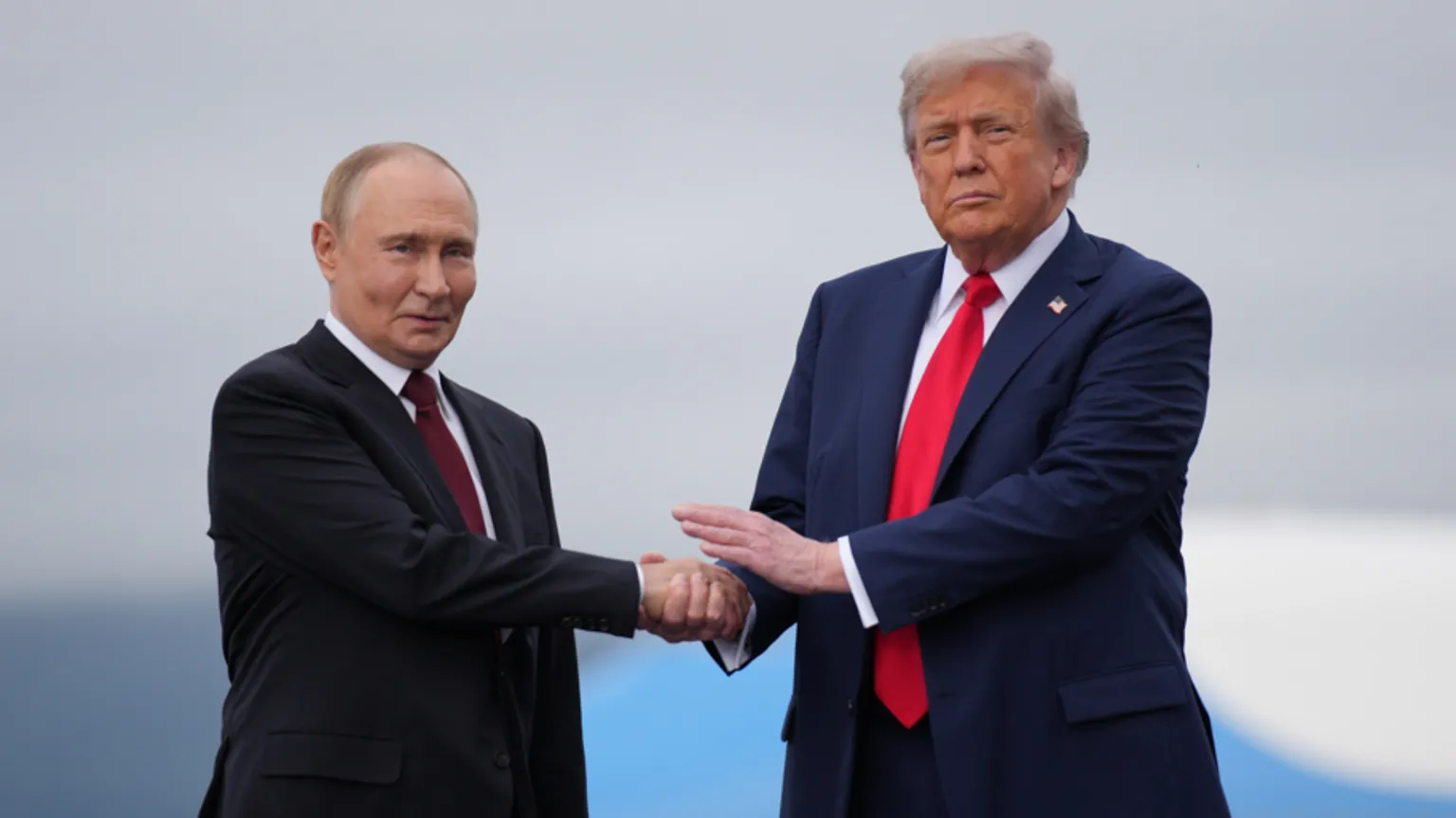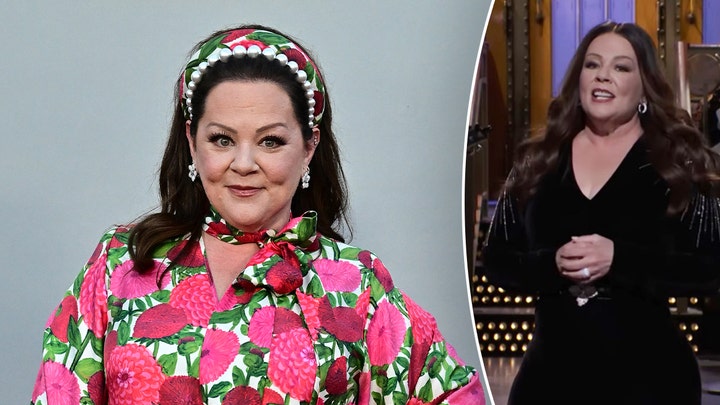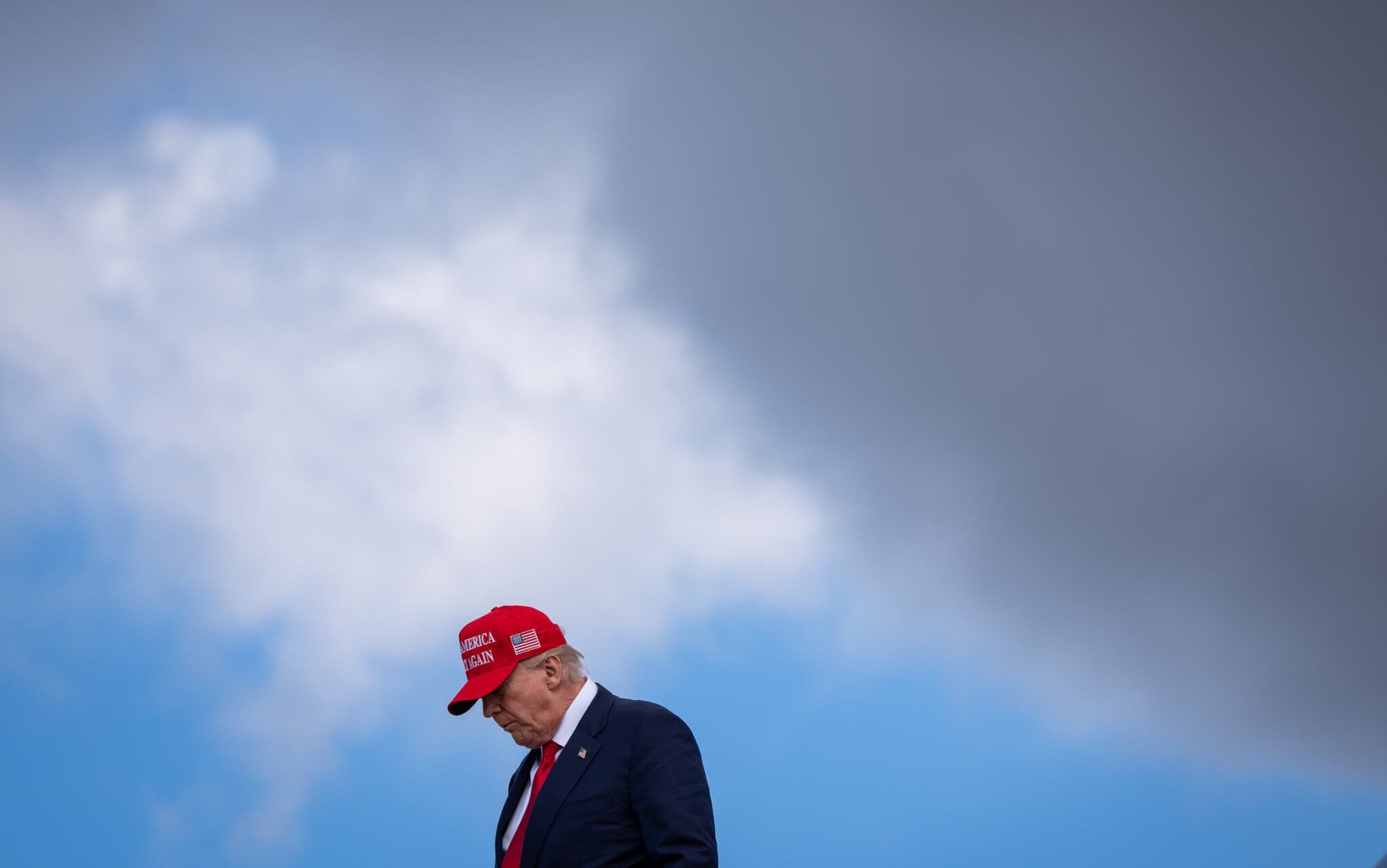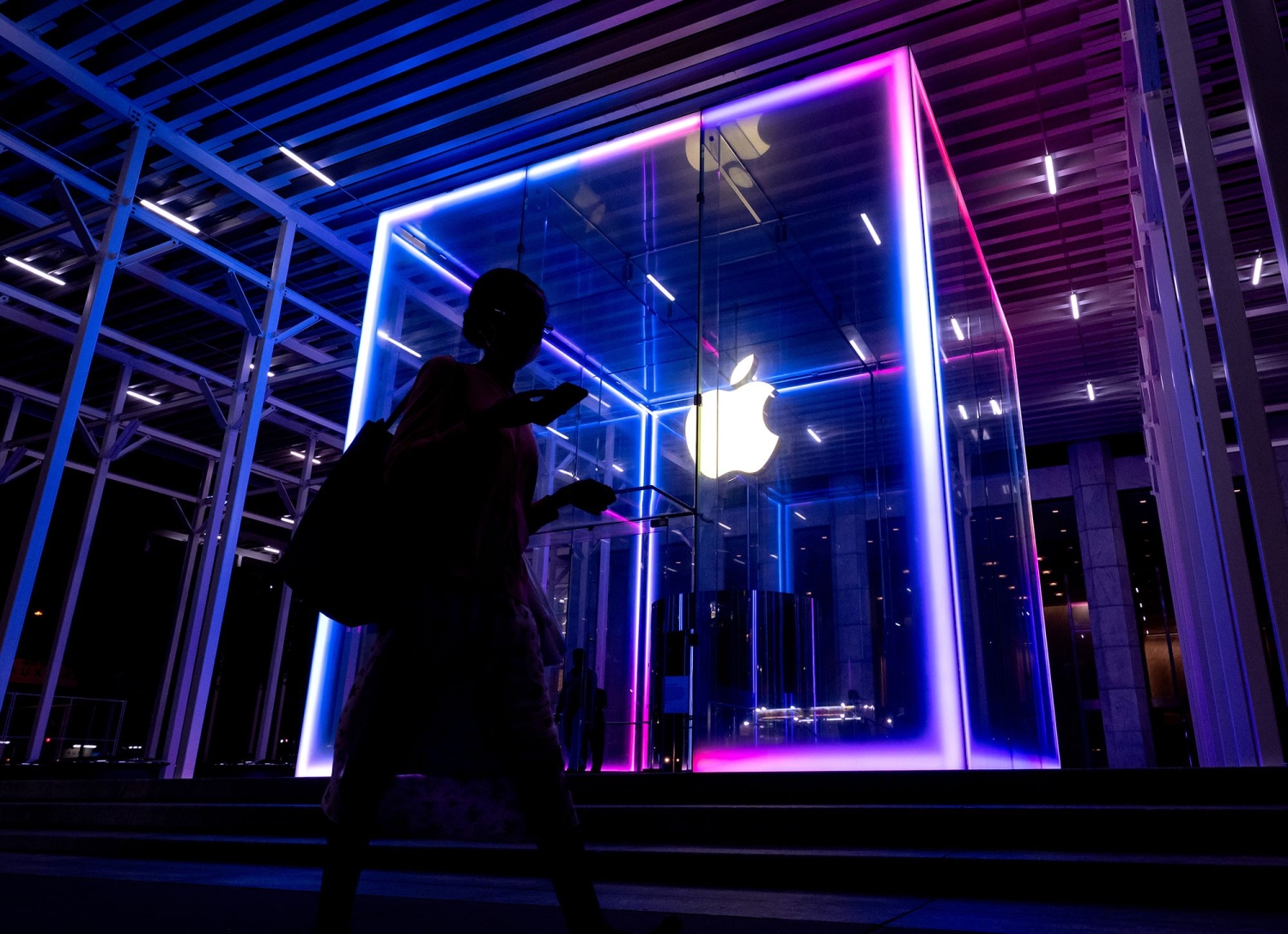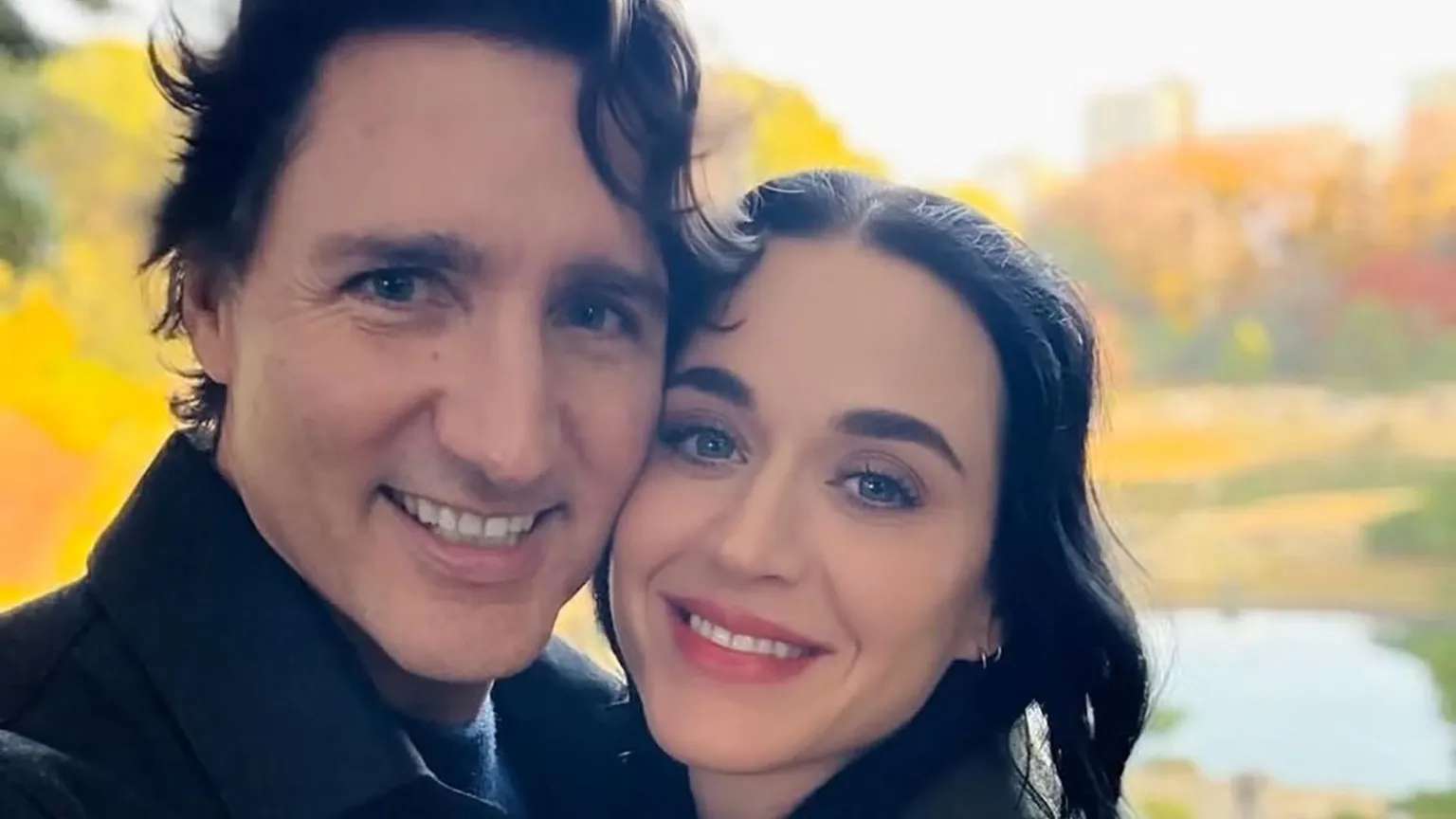
This article is more than
9 year old‘The Devil Wears Prada’ Turns 10: Meryl Streep, Anne Hathaway and Emily Blunt Tell All
The moment Meryl Streep read the script for “The Devil Wears Prada,” she knew it would be—in her words—“Yuge.” But despite a truckload of awards and a reputation as the greatest actress on the planet, Streep had always been hesitant to negotiate for more pay. Maybe it was the character Miranda Priestly, a fashion magazine editor so powerful she could terrify underlings without even raising her voice, that pushed her to do it. But the Oscar-winning actress felt emboldened. “The offer was to my mind slightly, if not insulting, not perhaps reflective of my actual value to the project,” Streep tells Variety. “There was my ‘goodbye moment,’ and then they doubled the offer. I was 55, and I had just learned, at a very late date, how to deal on my own behalf.”
Watch a clip from ‘Prada:’
“The Devil Wears Prada” showed Hollywood that it was never wise to underestimate a strong woman’s worth. The movie based on Lauren Weisberger’s best-selling novel was originally meant as light counter-programming when it opened on June 30, 2006, opposite “Superman Returns.” But Miranda managed to clobber the Man of Steel in the zeitgeist wars. “Prada” went on to gross $326 million worldwide for Fox (a staggering amount for a project that only cost $41 million), and it became a modern-day “Working Girl” for a generation of millennial women—and some men—who could relate to the idea of losing your identity to your job. Unlike the ladies on “Sex and the City” who lounged at lunches and cocktails all day long, the film’s scrappy heroine Andy Sachs couldn’t even take her dad to dinner without her phone buzzing non-stop.
All of a sudden there were “Prada” copycats everywhere. The movie pre-dated the global hysteria over New York Fashion Week; the cutthroat magazine world depicted in ABC’s “Ugly Betty;” and the 2009 documentary “The September Issue,” which softened the image of “Prada” inspiration, Vogue editor Anna Wintour. And with each year that passes, “Prada” only attracts new groupies from re-airings on cable TV. Just this week, John Legend toldPeople he loves to re-watch the movie with his wife Chrissy Teigen. Then there are all the “Prada” tributes on the Internet—celebrating the script’s zingers like, “That’s all!” and “I’m only one stomach flu away from my goal weight.”
“I never had any idea that my lines would get quoted to me every single week of my life since the movie has come out,” says Blunt, who played Miranda’s “first” assistant Emily, and hears from fans at airports and bathroom stalls. Hathaway believes the appeal of “Prada” is in the universal nature of its story about a demanding boss. “Everybody has had an experience like this,” Hathaway says. Stanley Tucci, who plays top Runway editor Nigel, puts it more simply. “It’s a fucking brilliant movie,” he says. “The brilliant movies become influential, no matter what they are about.”
“I never had any idea that my lines would get quoted to me every single week of my life.” EMILY BLUNT ON ‘THE DEVIL WEARS PRADA’
But “Prada” wasn’t an easy strut down the catwalk for Hollywood, as Variety learned in an oral history with the film’s stars and executives. It took Fox several years to bring the project to the big screen. Even after earning a greenlight, director David Frankel was a ball of nerves during the first half of the 55-day-shoot in New York.
“The days were long,” Frankel recalls to Variety. “Annie was very emotional. She was living with a guy”—her ex-boyfriend Raffaello Follieri—“who was a felon and embezzler. He didn’t want her to be working at all; he hated that she worked nights. She was always fragile when we shot late.” There were considerable problems scouting locations on a tight budget. The production couldn’t get permission to film at MoMA or Bryant Park, and they couldn’t find an actor to play Nigel for months—a role that Tucci accepted 72 hours before his character debuted on set. Not to mention the four writers that toiled on scripts that were trashed, nearly losing Blunt to another project and trouble securing a luxury apartment for Miranda’s home (the townhouse in the film belongs to a friend of a producer). “For a lot of us, it was our first big thing,” Frankel says. “We knew we were on very thin ice. It was possible this could be the end of the road for us.”
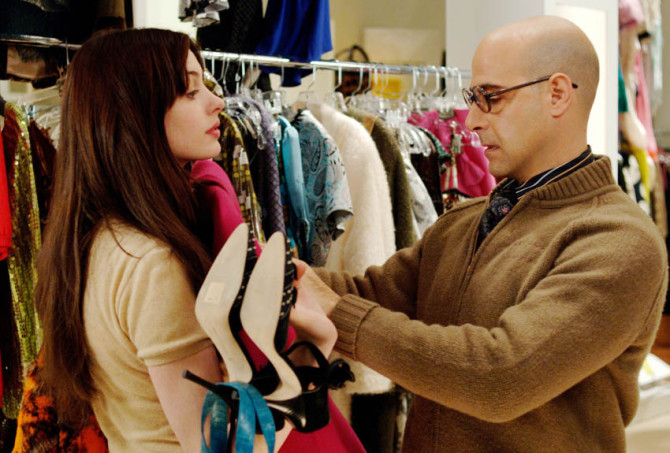
Instead, “The Devil Wears Prada” served as a career launching pad for almost everybody involved. The movie not only finally proved Streep as a box office force (paving the way for the summer releases of “Mamma Mia!” and “Julie & Julia”), it also introduced U.S. audiences to Emily Blunt and changed the trajectory of Anne Hathaway’s career. Before “Rachel Getting Married,” “Les Miserables” or “Interstellar,” “Prada” was the actress’ first leading role in a movie targeted to adults. Hathaway recalls hearing from producers who told her: “Whoa, you stood toe-to-toe with Meryl,” of her role as Andy. “I’m kind of the straight man, the observer,” Hathaway says. “I’m proud of what I did. But amongst the showy roles, it’s the quiet one. I think what people saw was promising—it made people want to see more.”
Like many instant classics, “Prada” benefited from perfect timing. It marked the beginning of the democratization of the fashion industry—when the masses started to pay attention to the business of what they wore. In 2004, “Project Runway” became a hit reality show for Bravo, and the outrageous frocks at the MET Gala would soon generate as much buzz as the Oscars red carpet. But when the premise for the story landed at Fox, none of that had happened yet.
Studios executives bid on the movie rights before the book had even hit shelves in 2003. All they saw was the first 100 pages of a manuscript, along with an outline, but Fox was sold solely on the strength of the title character. “I was the first person to read it at Fox 2000,” says Carla Hacken, the studio’s former executive vice president, who is now the president of production at Sidney Kimmel Entertainment. “I thought Miranda Priestly was one of the greatest villains ever. I remember we aggressively went in and scooped it up.”
The studio started to adapt the project before the book was even completed. But once it became a bestseller, they went back and tried to integrate details from Weisberger’s plot. The “Prada” book is a roman-a-clef revenge fantasy (Weisberger briefly worked as Wintour’s assistant at Vogue) about Andy getting even with Miranda. The early drafts of the screenplay, from four different writers, followed the source material closely, and resembled a “Zoolander”-like satire about the fashion world. “If you study the book,” says Elizabeth Gabler, the president of Fox 2000, “there is not a strong narrative that propels the plot forward. That required quite a bit of invention and trial and error. And since there wasn’t a strong third act in the book, we needed to invent that.”
“We knew we were on very thin ice. It was possible this could be the end of the road for us.” ‘THE DEVIL WEARS PRADA’ DIRECTOR DAVID FRANKEL
The studio interviewed a long list of directors with considerable experience making broad comedies. But Frankel got the job, even though he’d only made one feature (1995’s “Miami Rhapsody”) and directed TV episodes of “Entourage” and “Sex and the City” (it’s not a coincidence that the movie plays like a love letter to New York). When his agent set up an early call, he decided to bail. “It seemed undirectable to me,” Frankel recalls. “It was a satire rather than a love story.” When he eventually took a meeting with producer Wendy Finerman, he was honest about his concerns. “Miranda was a witch, and Andy’s motivation was to get her revenge,” Frankel says. “There was a lot of conflict that ended with Miranda being humiliated. I felt that wasn’t satisfying. My view was that we should be grateful for excellence. Why do the excellent people have to be nice?”
With this vision in mind, Frankel and Fox executives started looking for a writer to pen a new script from scratch. Rather than adapt the book so closely, the movie would be about the sacrifices successful women make at a fashion magazine. Frankel chose Aline Brosh McKenna based on their similar observations about living in New York as 20-somethings. “I wrote a draft pretty quickly—it took me about a month,” McKenna says. “Then I rewrote it based on everybody’s notes.” There was only one actress on the wish list to play Miranda. “We had talked about Meryl a little bit, but I dare not allow myself to dream,” McKenna says.
Hacken says there wasn’t even a second choice. “I don’t remember anything other than, ‘Please God—let it be Meryl,’” she says. When CAA power agent Kevin Huvane called to inform her that Streep had read the script and would meet with Frankel, Hacken momentarily put him on hold. “Yes!” she recalls cheering. “I was shouting in my office.”
Streep wanted to make sure that Miranda would be a fully formed character, not a caricature. “I am not sure the movie celebrates her as much as appreciates her business accomplishments,” Streep says. “It’s hard to run a big company like that.” She had two suggestions. “Getting the business of fashion scene in the movie,” she says, which meant adding the monologue where Miranda explains to Andy how the fashion world is responsible for her ratty blue sweater. “I also wanted,” Streep says, “a scene where she is without her armor, the unpeeled scene in the hotel room—just to see that face without it protective glaze, to glimpse the woman in the businesswoman.”

With Streep on board, Fox greenlit “The Devil Wears Prada,” but they needed a young actress to play Andy. Hathaway had fought hard to be considered for the project, following family hits like “The Princess Diaries” and “Ella Enchanted.” After she met Hacken for the first time, she recalls leaving a not-so-subtle message on her desk by tracing the words “hire me” in the sand of a zen garden, and letting the executive discover it after their meeting had ended. But Fox wanted a big movie star to play Andy, and pursued Rachel McAdams (who had headlined “The Notebook” and “Mean Girls”) for the role. Although she was co-starring in the studio’s “The Family Stone,” McAdams turned down “Prada” multiple times, citing her desire to step away from mainstream material.
Hathaway had also met with Frankel, who liked the idea of casting her as Andy. “I didn’t have to audition,” Hathaway says. “I had to be patient. I wasn’t the first choice.” She remembers getting a call from her agent with the good news. “I was putting on a shirt,” Hathaway says. “I had some buddies over. I remember running out in my living room, half dressed, screaming—I got ‘The Devil Wears Prada!’ I got ‘The Devil Wears Prada’!”
Frankel considered more than 100 actresses for the part of the Queen Bee assistant, and none of them felt right for Emily. Unbeknownst to him, a young British actress was toiling away in the Fox lot on multiple callbacks for the lead female role in what was meant to be a big studio blockbuster—the dragon fantasy epic “Eragon.” In one of her meetings, already late for her flight back to London, a casting agent put her on tape for “Prada.” She read the lines in a stern British accent, even though Emily was meant to be an American. Frankel loved the tape, but he had to wait until the “Eragon” director passed on Blunt. When that finally happened, Frankel called Blunt’s home in England and got her mother, who said she was out drowning her sorrows with her sister. But would he like to try her cell phone?
“I was in some dive club in London,�� Blunt says. “I called him back from the bathroom. He said, ‘Listen I would have cast you off the tape, but the studio wants to see you one more time. Can you did what you did but dress the part more?’” She had done her first audition in jeans and flip flops.
Several weeks later, the cast assembled for a table read in New York—the first time all three actresses were in the same room together. Hathaway was still trying to get a grip on the material. “When I’m nervous, my goofy side comes out,” Hathaway says. “I wasn’t doing anything particularly impressive.” Blunt recalls hearing a throaty laugh from Streep, and using that as encouragement to keep Emily frazzled and caffeinated. But it took a full 10 minutes until Miranda made her entrance, and a hush fell over the room the second Streep uttered a word. “I think we all had an idea of what Miranda would sound like,” Hathaway says. “It was a strident, bossy, barking voice. So when Meryl opened her mouth and basically whispered, everybody in the room drew a collective gasp. It was so unexpected and brilliant.”
Streep made one small, but important, tweak at the table read. She changed Miranda’s last line, where she’s sitting in a chauffeured car with Andy, from “Everybody wants to be me” to “Everybody wants to be us.” On the press tour for “Prada,” Streep insisted that Miranda the movie character wasn’t based on Wintour. She said her performance was inspired by men, but kept their identities a closely guarded secret until now. “The voice I got from Clint Eastwood,” Streep says. “He never, ever, ever raises his voice and everyone has to lean in to listen, and he is automatically the most powerful person in the room. But he is not funny. That I stole from Mike Nichols. The way the cruelest cutting remark, if it is delivered with a tiny self-amused curlicue of irony, is the most effective instruction, the most memorable correction, because everyone laughs, even the target. The walk, I’m afraid, is mine.”
| “The voice I got from Clint Eastwood. He never, ever, ever raises his voice and everyone has to lean in to listen, and he is automatically the most powerful person in the room.” |
| MERYL STREEP ON MIRANDA PRIESTLY |
As for Miranda’s appearance, Streep thought of the famous 85-year-old model Carmen Dell’Orefice, known for her trademark white bouffant. “I wanted a cross between her and the unassailable elegance and authority of Christine Lagarde,” Streep says. The costumes, which cost more than $1 million, came from celebrated designer Patricia Fields. They looked stunning, but they could also pose a walking hazard. Just take the montage where Miranda storms into the office each morning, and slams her overcoats on Emily’s desk. “It was a hard day for Meryl,” Blunt recalls. “There were probably 30 takes where either her arm got stuck or the coat didn’t hit the desk at the right time. That was one of the funniest things I’d ever seen.”
Frankel had been worried, because the studio had told him he couldn’t go to Paris to shoot the film’s third act—where Miranda takes Andy on a trip of a lifetime. “I was aghast,” Frankel says. But six weeks into the shoot, he had an editor cut a sizzle reel for Fox, which convinced executives to date the movie as a summer event and increase the budget. Both Hathaway and Simon Baker (who played a heartthrob book writer) flew to Paris for two days of shooting, but not Miranda. The studio claimed that flying Streep to Paris would be too expensive.
Many actors will tell you that Streep is often chatty on the set of her movies. But for “Prada,” she kept her distance from her colleagues, to maintain an uneasy chemistry in their scenes. The rest of the cast, though, bonded like family. Some even became real relatives. “Ten years after ‘The Devil Wears Prada,’ Stanley is in my actual family,” Blunt says. “How frightening is that? He’s married to my sister.” Tucci met his wife Felicity at Blunt’s wedding, an invitation he would not have received if he hadn’t played Nigel. “All thanks to ‘The Devil Wears Prada,’” Blunt says.
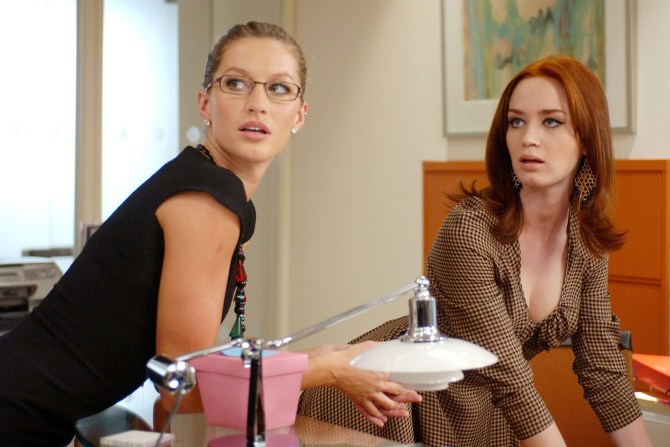
Blunt arguably got the biggest career boost out of the project. “It was a night and day change,” says Blunt, who was living in Los Angeles after the film wrapped. She used to visit the same coffee shop in the morning. “The day the movie came out,” Blunt says, “all the people in the bakery suddenly knew who I was. It was surreal.” Hathaway could tell that her new pal was destined for Hollywood greatness. “I’ve never witnessed a star being born before,” Hathaway says. “That’s the first time I watched it happen.”
With all the success of “Prada,” could there even be a Part 2? There’s a second book, but Streep—who has never made a sequel—has said privately she’s not interested in telling that story. “I’m not sure if could is the right question,” Hathaway says. “Should there be? I’d love to make a movie with all the people again that’s something totally different. But I think that one might have just hit the right note. It’s good to leave it as it is.”
Related stories
Meryl Streep Could Land Record 20th Oscar Nomination for 'Florence Foster Jenkins’
